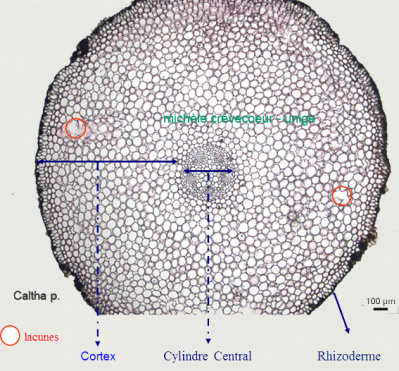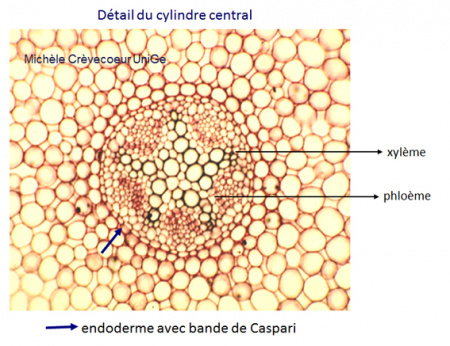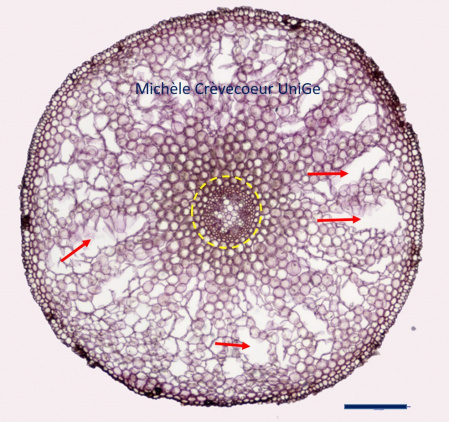Cross section through a Caltha palustris root
Caltha palustris, marsh marigold, is an herbaceous perennial plant from the Ranunculaceae family. It is characterized by thick and shiny leaves, the basal ones being heart – shaped. Stems are rhizomatous. Marsh – marigold is typical of land areas (marshes, wet wood, swamps) with soil that saturated in water, either permanently or seasonally.

This cross section is characterized by a small central vascular cylinder with parenchyma cells that contains xylem and phloem and an extensive cortex, constituted of circular or polygonal parenchyma cells (cortical parenchyma) characterized by thin cell walls and small intercellular spaces.
The protecting tissue is a monolayer of tight cells, without cuticle and without stoma called epidermis or rhizodermis. In the zone of maturation of a root many epidermis cells prolong to form long unicellular hairs helping to absorb water. They greatly the absorptive surface of roots during the growth period when large amounts of water and minerals are required.

In the central cylinder (figure above) xylem and phloem form separated patches with non – conducting cells between them. Xylem is exarch with metaxylem towards the center and protoxylem towards the periphery. In dicots there are commonly 3 to 5 protoxylem poles (4 poles here in Caltha p.) arranged around the central metaxylem. The phloem forms oval masses beneath a layer pericycle and it alternates with xylem bundles (see details on this page).
The innermost layer of cortex that occurs in all roots is the endodermis (blue arrow), a single layer of cells whose radial and transverse walls are impregnated with lignin and suberin to form Casparian bands. The endodermis is an important selective barrier and regulate flow of water and minerals.
Next to endodermis there is the pericycle, a single layer of thin – walled parenchyma cells lying between the endodermis and vascular tissues. It is the seat of the origin of lateral roots.her
In sections through other roots living in very wet soils, larger and more numerous air spaces (red arrows) are observed in the cortex forming aerenchyma (see the right figure).

In this section through a Caltha palustris root two characteristics indicate that it is a young dicotyledon root: a low number of xylem and phloem poles (4 to 5) and endodermis with Casparian bands.